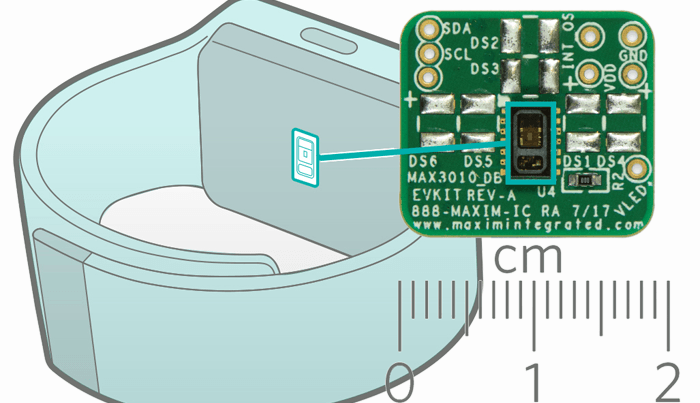Integrated pulse oximeter and heart-rate sensor
January 17, 2016
on
on

It does not take extensive research to know that health care equipment, and more generally personal portable or "wearable" items, are a growing market. To do well in this market, the biggest players need to combine strong digital and analog techniques. It’s no surprise to find Maxim well represented.
To stay the course in this area, manufacturers need to emphasise minimum “time-to-market” for new products. That’s the aim envisaged by Maxim with their High-Sensitivity Pulse Oximeter and Heart-Rate Sensor, MAX30102. Power consumption is very low, board footprint is greatly reduced, and development is assisted by an evaluation kit.
Principal Advantages:
To stay the course in this area, manufacturers need to emphasise minimum “time-to-market” for new products. That’s the aim envisaged by Maxim with their High-Sensitivity Pulse Oximeter and Heart-Rate Sensor, MAX30102. Power consumption is very low, board footprint is greatly reduced, and development is assisted by an evaluation kit.
Principal Advantages:
- Small board footprint without any loss of performance due to the integration of LED, photoelectric detectors, optical elements, and low noise electronics due to good rejection of ambient light;
- Very low power consumption at 1.8V (and separate 5 V power for the integrated LED);
- Ease of design: the evaluation board, with integrated accelerometer module, allows the user to get hands-on quickly.
Read full article
Hide full article



Discussion (0 comments)